Christmas in Mexico lasts much longer than just December 25th. It’s a lively, month-long celebration that is a big part of Mexican culture and history. The holidays start in early December and stretch into February. During this time-often called the “Guadalupe Reyes marathon”-people come together for big family gatherings, share homemade meals, enjoy music, and observe many religious traditions. Throughout the country, towns celebrate with parades, caroling, dancing, and fireworks, creating a warm and happy atmosphere everywhere you go.
In contrast to many Western countries that celebrate Christmas mainly on one day, Mexicans honor a much longer holiday period. This extended time allows everyone to join multiple traditions that have grown over generations and connect deeply with family and community. The air is often filled with the scent of foods like tamales, and traditional Christmas songs, or villancicos, ring out in neighborhoods decorated with bright lights and flowers. Sacred ceremonies mix with joyful celebrations, making Christmas in Mexico a time of faith, hope, and happiness that feels very different from celebrations elsewhere.

What Makes Mexican Christmas Traditions Different?
Mexican Christmas traditions stand out because they mix spiritual observance, group celebrations, and a rich background of Spanish and indigenous customs. Unlike the commercial approach seen in some countries, these traditions remain closely linked to history and community. The multi-week celebration means there are many chances for different events, each with important meaning.
What really makes these customs stand out is how they bring families and neighbors together. Homes and public spaces display detailed nativity scenes (nacimientos), and the famous Las Posadas processions are a highlight. Customs include local details, like the use of poinsettias, and combine native and Catholic traditions to tell a Mexican story in a colorful and heartfelt way. Old stories and new parties come together, creating a season filled with joy, color, and a sense of togetherness.
Key Dates and Events of the Mexican Christmas Season
Christmas in Mexico is not just a day but a long schedule of events, starting in early December and ending in February. This schedule reflects the mix of faith and family that characterizes Mexican culture and offers regular opportunities to gather, reflect, and celebrate.
When Does the Christmas Season Begin and End?
The Christmas holidays in Mexico begin on December 12th with the Feast of the Virgin of Guadalupe and usually finish on January 6th, Three Kings’ Day. However, for some, the celebration goes on until Candlemas (La Candelaria) on February 2nd. The whole period is often jokingly called the “Guadalupe Reyes marathon,” because the parties, food, and special events seem to never stop.
Throughout these weeks, Mexico is filled with different gatherings, including church services, street festivals, theatrical plays, and feasts with family. The excitement doesn’t end after Christmas and New Year’s. Three Kings’ Day and Candlemas keep people celebrating even after January.
What Makes Christmas Time in Mexico Unique?
The Mexican Christmas season is different from most others because of its long duration and blending of various cultures. Instead of being a short event, it is an ongoing festival mixing indigenous practices, Spanish Catholic ceremonies, and even some modern customs from the United States and Europe. This results in deep spiritual celebrations-filled with music, food, and joyful traditions.
The focus on being together runs through everything. Every night during Las Posadas, people remember Mary and Joseph’s journey before Jesus was born, and on Christmas Eve (Nochebuena), grand family dinners take place. The main decoration is the nacimiento or nativity scene, usually surrounded by poinsettias and holiday lights. These traditions create an environment where Christmas is something to be lived fully, not just noticed in passing.
Major Mexican Christmas Celebrations Timeline
| Date | Event | Summary |
|---|---|---|
| Dec 12 | Feast of the Virgin of Guadalupe | Pilgrimages, fireworks, and parades honoring Mexico’s patron saint |
| Dec 16-24 | Las Posadas | Nightly reenactments of Mary and Joseph seeking shelter; ends with parties |
| Dec 24 | Nochebuena | Family dinner and Midnight Mass, then opening presents at midnight |
| Dec 25 | Navidad | Christmas Day-quiet time, leftovers, family togetherness |
| Dec 28 | Holy Innocents Day | Mexico’s version of April Fool’s Day-pranks and jokes |
| Dec 31 | New Year’s Eve | Fireworks, 12 grapes tradition, resolutions |
| Jan 6 | Three Kings’ Day | Children receive gifts from the Wise Men; families share Rosca de Reyes bread |
| Feb 2 | Candlemas | Final holiday meal (tamales), blessing of figurines, closing the season |

The History Behind Mexican Christmas Traditions
Mexican Christmas traditions did not start overnight. They are the result of mixing native beliefs with Catholic ideas brought by the Spanish over hundreds of years. Instead of replacing old customs, new and old ways were combined, giving Mexico a special approach to Christmas.
Indigenous Influence and Catholic Roots
Before Europeans came, indigenous communities already held winter celebrations. After the Spanish arrived in the 1500s, they brought Christianity-including Christmas-but instead of erasing old customs, these often joined together. For example, the poinsettia flower was called “Cuetlaxochitl” by native groups and was used in winter ceremonies. Spanish priests included it in Christmas, and now it’s a symbol of the season. Similarly, piñatas were used by the Aztecs during ceremonies. After Spanish influence, the piñata became part of Christmas celebrations.
How Did Christmas Grow in Mexico?
After the Spanish conquest, efforts to teach indigenous groups about Christianity led to new blended traditions. Las Posadas was introduced to re-tell the story of Mary and Joseph, but the festival lined up with old Aztec festivities and took on local flavor-fireworks, dancing, and native decorations. Even nacimientos, or nativity scenes, included local figures, animals, and themes. Over the last century, elements like Christmas trees and Santa Claus (from Germany and the USA) have joined traditional customs in many homes, resulting in the special multi-layered holiday seen today.
Main Religious Events During Mexican Christmas
Catholic traditions are at the center of Mexican Christmas, but many practices also show local culture. The following events are especially important to the spirit of the season:
Virgin of Guadalupe Day
The holiday season starts with the Feast of the Virgin of Guadalupe on December 12th. This day is both a religious and national holiday, honoring Mexico’s patron saint. Millions of people travel to Mexico City to visit the Basilica of Guadalupe. There are fireworks, music, indigenous dances, and prayers throughout the night. Many work places also host meals to celebrate. This day sets the festive and spiritual tone for the rest of the holiday season.
Las Posadas
From December 16th to 24th, Las Posadas marks the search for shelter by Mary and Joseph before Jesus’ birth. At night, people walk in small groups, singing songs and carrying candles, going door to door asking for a place to stay. After some “rejections,” a final house opens its door, and the group is welcomed into a party with food, music, and a piñata. These events create strong community bonds and are especially fun for children.

Nochebuena (Christmas Eve) and Midnight Mass
Christmas Eve is a major event. After Las Posadas ends, families enjoy a special dinner with traditional dishes and desserts, then go to midnight Mass (Misa de Gallo). This church service honors the birth of Jesus. Afterwards, fireworks and the opening of presents bring even more joy into the night.
Holy Innocents Day
On December 28th, Mexicans enjoy Día de los Santos Inocentes. Once a solemn remembrance, it is now similar to April Fool’s Day, with people playing pranks and telling jokes. Children might get sweets, and newspapers may print fake stories. It’s a good-natured break in the midst of religious celebrations.
Three Kings’ Day
January 6th, Día de los Reyes Magos, is when children receive gifts from the Wise Men. The night before, kids may leave out a shoe or balloon with a letter about their wishes. The day includes sharing a round loaf called Rosca de Reyes with a hidden figure inside-whoever finds the figure will host the next feast on Candlemas.
Candlemas (La Candelaria)
The long holiday ends with Candlemas on February 2nd. Families who found the figurine in their slice of Rosca de Reyes now serve tamales and atole (warm drink) to friends and family. They bring their baby Jesus figurines to church for a blessing. This meal marks the official end of the festivities and strengthens community ties.
Main Mexican Christmas Customs and Activities
The sights, sounds, food, and community events are all important parts of Christmas in Mexico:
Las Posadas: Parades, Songs, and Piñatas
Every evening from December 16th to 24th, groups walk through neighborhoods, singing songs and acting out Mary and Joseph’s search for a place to stay. Children dress up, carry candles, and after the final “inn” welcomes them, a party begins. The highlight is breaking piñatas, which are often colorful stars with seven points, each one representing a sin. When the piñata breaks, candies and toys fall, representing rewards for keeping faith.
Nativity Scenes (Nacimientos)
Nativity scenes are the most common Christmas decoration in Mexico, set up by December 12th and left until Candlemas. Mexican nacimientos can be very detailed, showing not just the Holy Family but also local plants, food sellers, and musicians. The baby Jesus is added on Christmas Eve, and the Wise Men are placed on January 6th.

Pastorelas: Christmas Plays
During December, groups perform plays called pastorelas, which tell the story of shepherds traveling to see baby Jesus. These plays usually include a battle between good (represented by angels) and evil (the devil), with lots of jokes and local humor. They are shown in schools, theaters, and town plazas, mixing teaching and fun.
Villancicos: Christmas Carols
Christmas carols, or villancicos, fill the air during the season. Some are Spanish versions of international songs, like “Silent Night,” while others are uniquely Mexican, such as “Los Peces en el Río.” Villancicos are sung during Las Posadas, at church services, family dinners, and community events.
Christmas Piñatas: Shapes and Meaning
The classic Mexican Christmas piñata is a star with seven points, used mostly during Las Posadas. When people hit the piñata blindfolded, it stands for overcoming sin through faith. When it breaks and candies fall out, it’s considered a reward for faith and perseverance.
Decorations: Trees and Poinsettias
Many households now include Christmas trees, especially in cities, although the nacimiento remains central. Trees are decorated with lights and ornaments, sometimes set up beside nativity scenes. Bright red poinsettias-the Nochebuena flower-are everywhere in December and January, both inside houses and in public spaces.
Family and Community During the Holidays
Family and community are the focus of Christmas in Mexico. Celebrations bring together not just parents and children, but also grandparents, cousins, and neighbors. The spirit of sharing, welcoming visitors, and helping those in need is present throughout the season.
Family and Friends Gatherings
Big family gatherings, especially on Christmas Eve, create energy and warmth. People share dinner, attend church, and open gifts. Las Posadas often involve entire neighborhoods, making everyone feel included and valued.
Secret Santa (Amigo Secreto) and Gift Giving
Besides the gifts brought by the Wise Men or Santa, many groups play Amigo Secreto, or Secret Santa. Names are drawn beforehand, and gifts are secretly exchanged, often during the Christmas Eve dinner, adding excitement and surprise to the evening.
Santa Claus in Mexico
Although not a traditional part of Mexican Christmas, Santa Claus has become more common, especially in larger cities and the north. Now, some children receive presents from both Santa on December 24th and the Three Kings on January 6th. Even as Santa’s role grows, the Wise Men remain the main gift-givers in most towns.
Traditional Christmas Foods and Drinks in Mexico
Meals are important at Christmas. Friends and family celebrate by sharing both savory dishes and sweet treats.
Main Holiday Foods
- Tamales: Corn dough filled with meats or sweets, wrapped in leaves and steamed. Essential for holiday meals.
- Bacalao: Salted cod, cooked with tomatoes and olives-often served for Christmas Eve.
- Pozole: Soup made with pork or chicken and hominy, prepared in big pots for family gatherings.
- Romeritos: Greens cooked with shrimp cakes and mole sauce, a classic in some regions.
- Turkey or Pork Leg: Some families roast a turkey or a marinated pork leg for Christmas dinner.
Sweets: Buñuelos and Rosca de Reyes
- Buñuelos: Crunchy, fried dough sprinkled with sugar or syrup, eaten during Las Posadas and after Christmas dinners. In some places, smashing the plate after finishing your buñuelo is considered good luck.
- Rosca de Reyes: Sweet, round bread decorated with candied fruit for Three Kings’ Day. Small figurines are hidden inside, and whoever finds one must host the Candlemas party and serve tamales.
Favorite Holiday Drinks and Salads
- Ponche Navideño: Hot punch made with fruits like guava, apples, tejocotes, and spiced with cinnamon. Adults may add a splash of alcohol.
- Ensalada de Nochebuena: Festive salad with lettuce, beets, fruit, nuts, and sometimes a sweet cream dressing, served on Christmas Eve.

Meals for Christmas Eve and Christmas Day
| Date | Main Foods | Notes |
|---|---|---|
| Dec 24 (Nochebuena) |
Tamales, bacalao, romeritos, turkey/pork, ensalada, ponche | Main family dinner after Posadas, before/after Midnight Mass |
| Dec 25 (Navidad) |
Leftovers (“recalentado”) | Relaxed meals with family, playing with gifts |
Regional Christmas Celebrations in Mexico
Different parts of Mexico have special holiday customs that add to the overall variety and richness of the season. Below are some standout examples:
City and Regional Highlights
- Oaxaca City: Hosts the famous Noche de Rábanos (Night of the Radishes), where artists carve radishes into amazing holiday shapes on December 23rd.
- Zacatlán de las Manzanas, Puebla: Turns into a festive village with Christmas lights, big trees, and nativity scenes. Local apple cider and tamales are holiday treats.
- Atlixco, Puebla: Famous for its light festival, where the town is covered in decorations and has a Christmas village with oversized displays.
- Tlalpujahua, Michoacán: “The town of eternal Christmas” is known for handmade glass ornaments and an annual holiday fair.
- Arteaga, Coahuila: Nicknamed the “Swiss of Mexico,” this mountain town offers a snowy Christmas experience, mixing outdoor fun with Mexican food and song.
The Night of the Radishes-Oaxaca’s Special Event
Every year on December 23rd in Oaxaca City, Noche de Rábanos (Night of the Radishes) takes place. Local artists carve huge radishes into amazing figures and scenes, including nativity stories, Mexican legends, and animals. First started by farmers trying to draw customers to the market, this contest is now famous, drawing both locals and tourists. The radish sculptures only last for a few hours, making the event exciting and temporary-just like the Christmas season itself.

Frequently Asked Questions about Mexican Christmas Customs
How Is Mexican Christmas Different from Other Countries?
Christmas in Mexico is unique because it goes on for weeks, not just a day or two. Mexico combines indigenous rituals, Catholic ceremonies, and modern elements. The main decoration is still the nacimiento nativity scene, and the holiday’s focus is on community, not just gifts. Santa Claus is present but not as central as the Wise Men, who bring presents on January 6th. Las Posadas and dishes like tamales and bacalao also make Mexican Christmas distinct.
Can Visitors Join in the Mexican Christmas Festivities?
Yes, visitors are welcome to take part in many Christmas events across Mexico. It’s common for tourists to join public Las Posadas parades, attend Midnight Mass, and try holiday foods at open markets. Even though some family gatherings are private, the friendly atmosphere means everyone can enjoy the spirit of the season, especially in public spaces and community festivals.

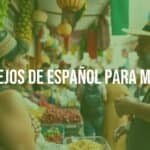


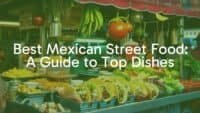
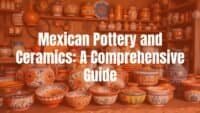

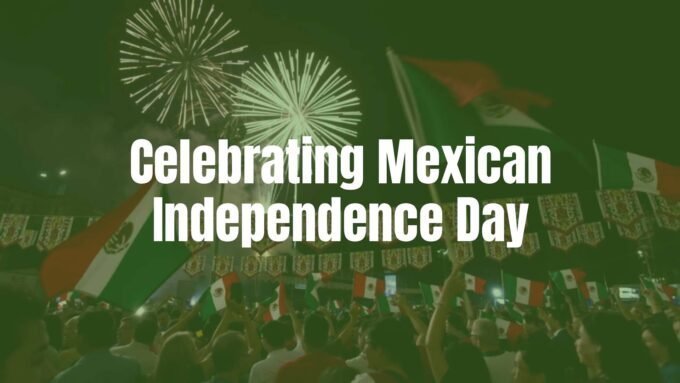
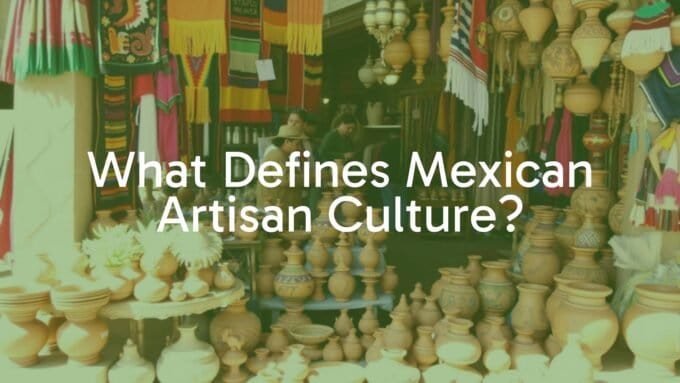
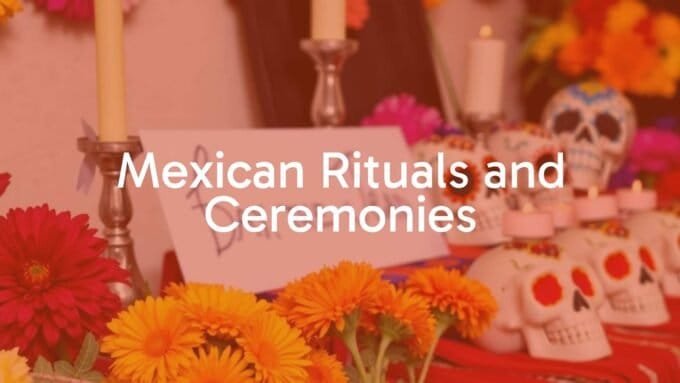
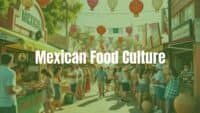
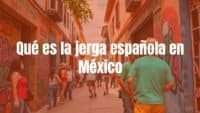
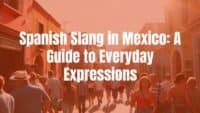
Leave a comment